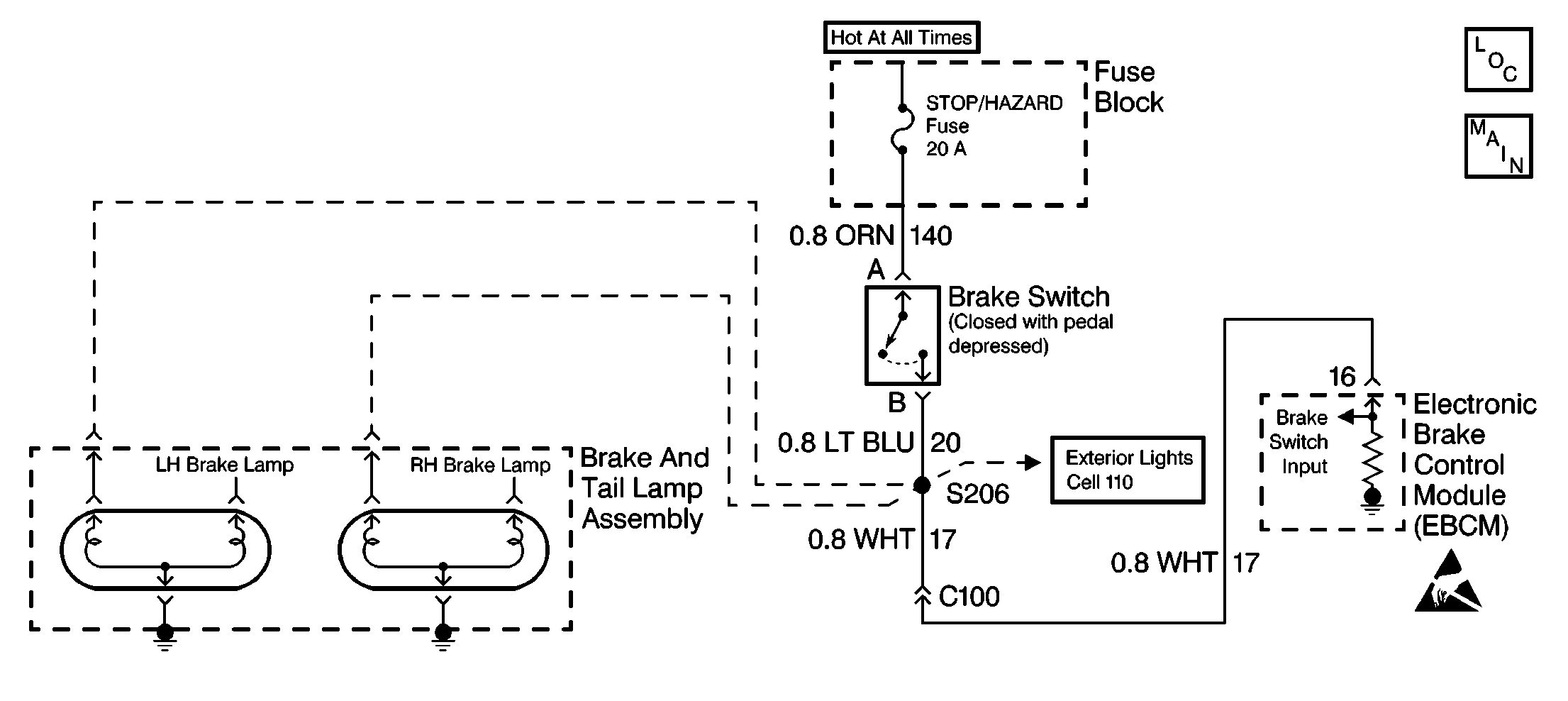
Circuit Description
DTC C1294 determines the proper operation of the brake switch. Proper operation of the brake switch is important because the brake switch activates the ABS and inhibits the ETS when the brake switch is on. The brake switch deactivates the ABS when the brake switch is off. The following conditions always occur when the brake switch is on:
| • | ABS operation is requested. |
| • | ETS operation is inhibited. |
Conditions for Setting the DTC
DTC C1294 can set if the vehicle's speed is greater than 40 km/h (25 mph).
A malfunction exists if the brake was always on during two consecutive drive cycles.
Action Taken When the DTC Sets
| • | A malfunction DTC stores. |
| • | ABS operation remains. |
| • | ETS operation is inhibited. |
Conditions for Clearing the DTC
| • | The condition responsible for setting the DTC no longer exists and the Scan Tool Clear DTCs function is used. |
| • | 100 drive cycles pass with no DTC(s) detected. A drive cycle consists of starting the vehicle, driving the vehicle over 16 km/h (10 mph), stopping and then turning the ignition off. |
Diagnostic Aids
Use the enhanced diagnostic function of the Scan Tool in order to measure the frequency of the malfunction.
Step | Action | Value(s) | Yes | No | ||||||
|---|---|---|---|---|---|---|---|---|---|---|
|
Important: Zero the J 39200 test leads before making any resistance measurements. Refer to the J 39200 user's manual. | ||||||||||
1 | Was the Diagnostic System Check performed? | -- | Go to Diagnostic System Check | |||||||
2 |
Are the rear brake lamps on? | -- | ||||||||
3 | Disconnect the stoplamp switch connector. Are the rear brake lamps on? | -- | ||||||||
4 | Inspect the adjustment of the stoplamp switch. Is the stoplamp switch adjusted correctly? | -- | ||||||||
5 |
Do not start the engine. Is the voltage within the specified range? | 0-1 V | ||||||||
6 |
Is there evidence of poor terminal contact, terminal corrosion, or damaged terminals? | -- | ||||||||
7 |
Do not start the engine. Does DTC C1294 set as a current DTC during the last three drive cycles? | -- | ||||||||
8 | Repair the short to voltage in CKT 17 or 20. Is the repair complete? | -- | Go to Diagnostic System Check | -- | ||||||
9 | Adjust the stoplamp switch. Is the repair complete? | -- | Go to Diagnostic System Check | -- | ||||||
10 | Replace the stoplamp switch. Is the repair complete? | -- | Go to Diagnostic System Check | -- | ||||||
11 | Replace all of the terminals and connectors that exhibit the following conditions:
| -- | Go to Diagnostic System Check | -- | ||||||
12 | Replace the EBCM. Is the repair complete? | -- | Go to Diagnostic System Check | -- | ||||||
13 | The malfunction is intermittent or is not present at this time. Refer to Diagnostic Aids for more information. | -- | -- | -- | ||||||
